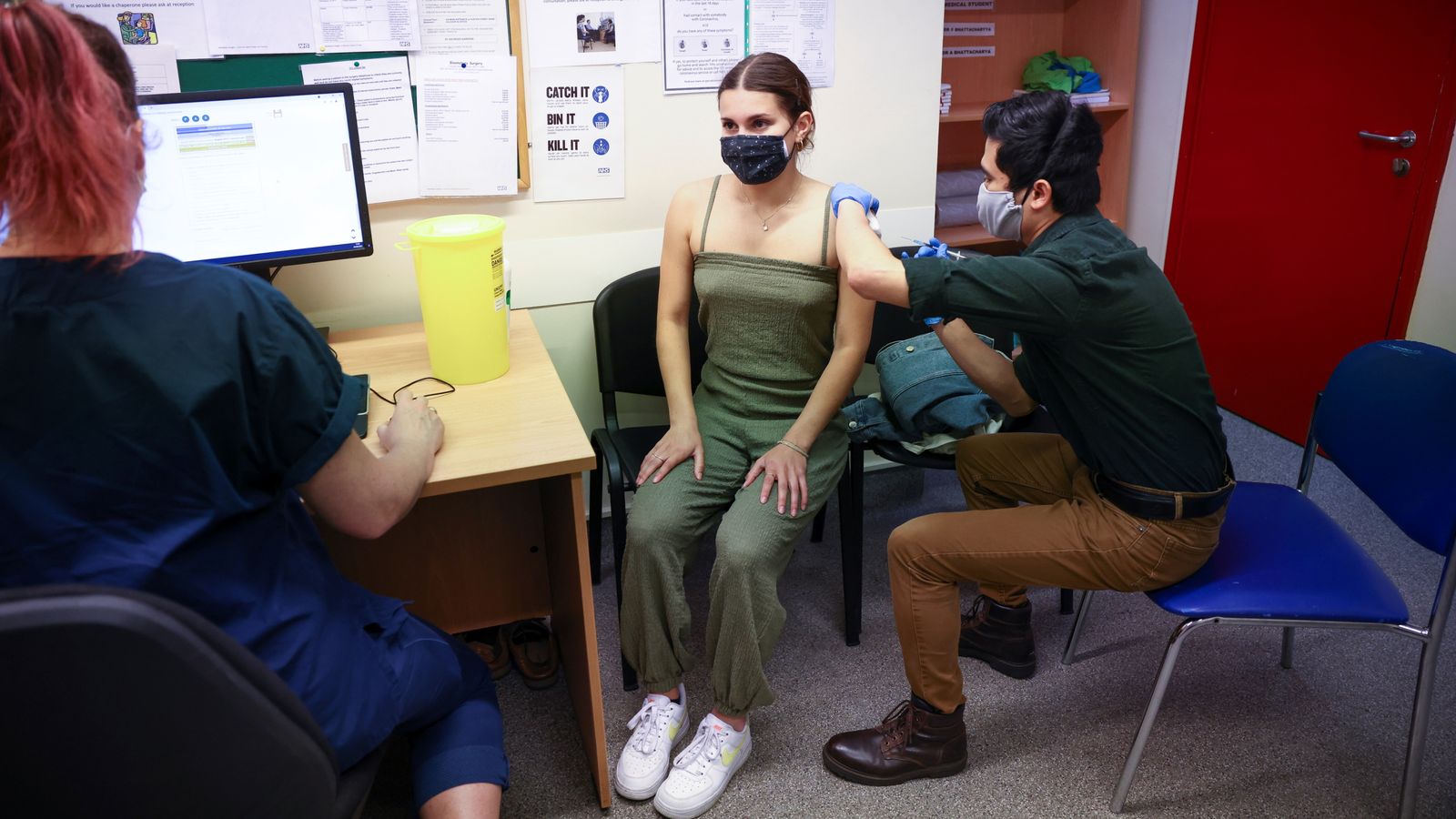Hesitancy among younger age groups to receive a COVID-19 vaccine has fallen, according to new figures.
The Office for National Statistics (ONS) survey looked at attitudes during the period from 23 June to 18 July – a day before most coronavirus restrictions were lifted in England.
For 16 and 17-year-olds – who are now able to get a jab following last week’s announcement to extend the rollout to that age group – hesitancy has decreased from 14% to 11%.
Live COVID updates from the UK and around the world
Among those aged 18 to 21, hesitancy around jabs went down to 5% from 9%, and dropped slightly for 22 to 25-year-olds from 10% to 9%.
Coronavirus jabs for healthy 16 and 17-year-olds started on Friday, two days after a recommendation from the Joint Committee on Vaccination and Immunisation (JCVI) to extend the programme.
Until that point, some under-18s had been eligible for a jab if they had certain health conditions, lived with someone who is immunocompromised or were approaching their 18th birthday.
The extension of the rollout means all of the UK’s 1.4 million 16 and 17-year-olds are now eligible to get a first dose.
For the ONS survey, vaccine hesitancy refers to adults who have chosen not to be vaccinated, report being very or fairly unlikely to have a vaccine if offered, responded “neither likely nor unlikely”, “don’t know” or “prefer not to say” when asked how likely they would be to get a jab if offered.
The ONS data involved 15,433 people aged 16 and above in England, Scotland and Wales.
Overall, more than nine in 10 adults (96%) reported positive sentiment towards coronavirus vaccines while 4% reported hesitancy – figures unchanged from the previous findings which covered 26 May to 20 June.
The rate of vaccine hesitancy has fallen in most areas of the UK, the ONS said.
Areas which previously had the highest hesitancy in the early part of the year have seen declines, with inner London east dropping from 13% to 7%, outer London west and the North West from 12% to 7%, and west Wales and the Valleys decreasing from 11% to 5% for the period between April and July.
The findings suggest the most hesitant groups are in London and the Midlands.






















